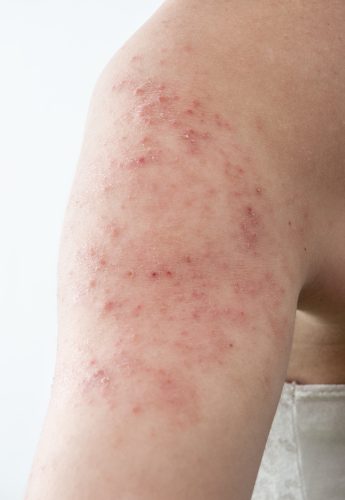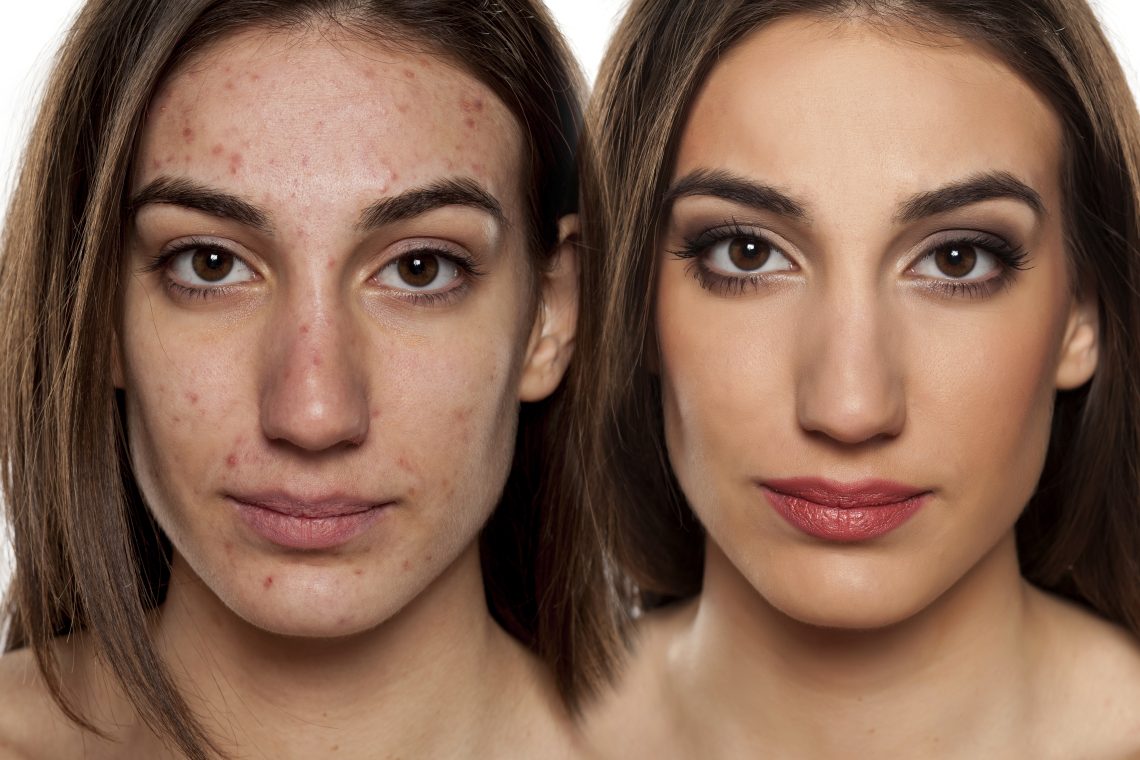Today we want to share 7 root causes of chronic skin conditions. According to the American Academy of Dermatology, skin disease costs the healthcare system $75 billion. Skin conditions are a major concern for people who experience such issues. That probably explains the expenses incurred in medical and preventative measures. There are several root causes of problematic skin conditions, and identifying the reason can help determine the type of treatment. Below is a list of some factors responsible for chronic skin conditions.
Hormonal imbalance
Usually, hormonal imbalances have a direct correlation with male or female infertility. It also contributes to excessive weight gain and loss. However, according to medical research, skin conditions like melasma, discoloration, acne, and xeroderma might flair up due to an imbalance of hormones. Usually, it affects both males and females, but women experience these conditions more.
According to a Northwell health report, 80% of women live with hormonal imbalance, while only 30% of men have it. Perhaps, this explains why women are more likely to experience chronic skin discolorations, hyper-pigmentation, folliculitis, and several other derma issues. Usually, a skin condition caused by hormonal imbalance is treated from the root level. In other words, the imbalance must be treated first. Sometimes, when that is done, you may notice a drastic change in the skin’s appearance. Depending on the severity, the physician may prescribe a topical cream to be used alongside other prescribed oral drugs.
Genetics and hereditary
 Available data indicates that one in three Americans has a chronic skin condition. Additionally, two in four persons with skin disorders were predisposed due to genetics and hereditary. In other words, the likelihood of experiencing a particular skin disease is heightened if it runs in the family. Medical News reports say that atopic dermatitis, tuberous sclerosis, and psoriasis are a few of such genetically-induced skin conditions.
Available data indicates that one in three Americans has a chronic skin condition. Additionally, two in four persons with skin disorders were predisposed due to genetics and hereditary. In other words, the likelihood of experiencing a particular skin disease is heightened if it runs in the family. Medical News reports say that atopic dermatitis, tuberous sclerosis, and psoriasis are a few of such genetically-induced skin conditions.
The chronic nature of these disorders makes them a huge concern for people living with them. A person would have to learn to manage them while taking steps to minimize triggers and flare-ups. Using psoriasis as an example, people predisposed to the condition must be mindful of several factors that could cause a flare-up. Medical research states that such people are more likely to develop scalp psoriasis. Although treating scalp psoriasis at home is pretty common, it would be best to avoid triggering the condition in the first place. Being genetically predisposed to a chronic skin condition can be worrying. Due to the inability to completely get rid of them, the best solution is to rely on lifelong management. Fortunately, with advancements in medical research, these conditions respond better to improved medications.
Environmental factors
Things like UV rays, infra-red radiation, and air pollution fall under environmental factors. And concerning the skin, they manifest as chronic skin lesions, neurodermatitis, and eczema. Neurodermatitis, in particular, is often characterized by persistent itching when exposed to any of the factors listed above. Indeed, environmentally-induced skin disorders are similar to allergies, but experts say there are differences.
One distinction is that allergies can easily be avoided, but not much can be done about environmental factors. Perhaps, that is the trickiest of the lot, but an experienced dermatologist can formulate a care plan to reduce the number of flare-ups experienced in a period.
Allergies
According to statistics, 41.4% of the population has skin allergies. They occur when your skin reacts to an external triggering element, and your autoimmune system interprets it as an ‘enemy.’ The reaction on the skin is evidence of the ‘fight’ going on in your body. The allergy triggers may be food, medication, pollen, insects, latex, cosmetics, etc. It is a long list of triggers and may require constant monitoring to determine your specific allergy. Conditions like urticaria or hives and eczema are pretty common skin allergy conditions.
Underlying disease
Did you know that cardiovascular diseases can trigger chronic skin conditions? Whether you have a genetic predisposition to a skin problem or not, heart disease can cause changes in the appearance of your skin. A medical report published on the wederm.com site indicated that pea-sized lumps often appear on the skin of people with cardiovascular disease.
They form on the shoulders, arms, legs, and around the buttocks, often appearing as a rash. In medical terms, this is known as eruptive xanthomatosis. According to physicians, it also indicates high cholesterol levels in the body. This rash may look slightly smoothen when the underlying disease is under control. However, they usually never disappear, so keep this in mind.
Dehydration
Few people know that persistent dehydration can result in some chronic skin conditions. Dry, scaly skin that never seems to disappear could signify that you aren’t doing too well drinking enough water. Science is yet to explain why some people show these signs quicker and more than others. The closest explanation given is the skin structure of the people at risk.
Usually, people with thin skin show early signs of dehydration. In other instances, instead of a dry, scaly appearance of the skin, those at risk will experience increased itchiness and tiny tears. For such people, the best solution is to be conscious of their daily water consumption. It may also require limiting or avoiding diuretics like tea and coffee. Such persons may also have to rethink alcohol consumption since it dries the skin even more.
Aging
In geriatric dermatology, the list of chronic skin conditions is quite long. Some examples are Eczematous Dermatitis, Purpura, and Chronic Venous Insufficiency. As expected, these skin disorders are predominant among senior citizens. During the aging process, the skin loses elasticity, has reduced collagen production, increased thinness, and other elements that put it at risk of such conditions. While these disorders cannot be cured in all cases, they can be effectively managed to bring relief to the aging population.
In trying to understand skin conditions, it would be best to begin with the possible causes. That can influence the treatment method and ultimately bring much-needed relief. These are just a few, and seeking expert advice on possible treatments is always advisable.
Read more beauty and skin care articles at ClichéMag.com
Images provided by Flickr, Unsplash, Pexels, Pixabay & Creative Commons

